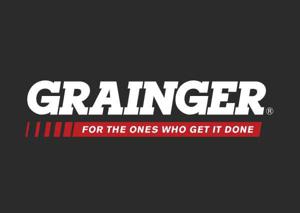Dividend Value Builder Newsletter
- Discover, Compare, and Evaluate Stocks Without Emotional Bias -
(Intrinsic Value Analysis For Over 300 Stocks)
W.W. Grainger (GWW) Stock Analysis

W.W. Grainger Dividend
The W.W. Grainger (GWW) dividend has been paid every year since 1971 and increased for 54 consecutive years; qualifying the company as a Dividend King, Dividend Aristocrat, and Dividend Champion.
Current Dividend Annualized: $9.04
Why you might want to own the company:
W.W. Grainger is an attractive holding for investors seeking a stable, well-managed industrial distributor with a strong dividend history and consistent earnings growth. Grainger’s strengths lie in its scale, extensive product catalog, strong supplier relationships, and efficient supply chain. Its dual-channel model—serving both large enterprises and small businesses—enables broad market reach and adaptability. The company’s resilience, even in volatile markets, makes it a favorable core holding in an industrial-focused portfolio.
Is the stock price a Buy, Sell, or Hold?
W.W. Grainger (GWW) Intrinsic Value – Margin of Safety Analysis
(updated November 2025)
Normalized Diluted Earnings Per Share (TTM): $35.68
Free Cash Flow Per Share (TTM): $25.57
Cash Flow From Operations (CFO) Per Share (TTM): $42.51
Estimated Intrinsic Value: $676
Target Buy Price Based on Required Margin of Safety = $676
(Required Margin of Safety Based On Risk Stability Grade:
A = 0%, B = 20%, C = 40%, D = 60%, F = 80%)
Target SELL Price Based on Estimated Intrinsic Value = $946
(Allow Overvaluation Adjusted by Risk Stability Grade:
A = 40%, B = 25%, C = 15%, D = 5%, F = 0%)
Risk / Stability Grade: A
A grade indicates a quality company with a strong balance sheet, high earnings quality, and a positive business environment. These stocks require the slimmest margin of safety within the stock universe.
B grade indicates a company with a good balance sheet, good earning quality, and a stable business environment. The margin of safety required should be greater than stocks with an A grade but less than the average stock.
C grade indicates a company with a sufficient balance sheet, at least average earnings quality, and a reasonably stable business environment. The margin of safety required is greater than A & B stocks, but less than D & F stocks.
D grade indicates a company in good standing but has issues that could affect its stability and long term risks. D rated stocks should require a large margin of safety when purchased.
F grade indicates a company with significant issues that are currently affecting its stability and long term risks. Require an extremely large margin of safety for F rated stocks when purchased.
Financial Risk Grade: A
A grade indicates an extremely low probability of a dividend cut. This rating is reserved for companies with strong balance sheets and/or excellent dividend histories.
B grade indicates a very low probability for a dividend cut.
C grade indicates a low probability for a dividend cut and/or average safety risk.
D grade indicates there are issues that should be considered concerning future dividend payments.
F grade indicates serious dividend safety risks. Investors should complete comprehensive due diligence before investing.
Business Quality Grade: A
A grade indicates earnings quality is high or far above average.
B grade indicates earnings quality is good and/or above average.
C grade indicates earnings quality is acceptable or average.
D grade indicates earnings quality is poor and requires thoughtful due diligence.
F grade indicates the quality of the earnings is poor or far below average requiring serious due diligence.
Earnings Report: 9/30/25
AAAMP Portfolios Position Disclosures:
Treasure Trove Dividend (TTD) – None
Global Dividend Value (GDV) – None
Dividend Growth & Income (DGI) – None
Global Value (GV) – None
Global Value Aggressive (GVA) – None
Global Conservative Income (GCI) – None
Global High Income (GHI) – None
Company Description
Sector: Industrials
Industry: Industrial Distribution
Company Overview:
W.W. Grainger, Inc. (GWW) is a leading distributor of industrial supplies, maintenance, repair, and operations (MRO) products. The company offers an extensive range of products, including safety equipment, tools, electrical components, HVAC, plumbing, and material handling solutions. Grainger operates primarily in North America, with a growing international presence, serving customers across industries such as manufacturing, government, healthcare, and education. Its key brands include Grainger, MonotaRO, and Zoro.
Company Strengths:
Grainger’s strengths include its broad product assortment, established customer base, and extensive distribution network. The company has a strong reputation for reliability and quick delivery, particularly in the MRO market, which is crucial for businesses that rely on the timely availability of products to keep operations running smoothly. Grainger also benefits from a large, loyal customer base, high levels of customer service, and efficient supply chain management. Additionally, the company’s investments in e-commerce and digital solutions have helped it adapt to changing customer preferences.
Company Challenges:
Grainger faces challenges such as fluctuations in raw material costs and supply chain disruptions that can affect product availability and profitability. Intense competition from both local distributors and large e-commerce platforms like Amazon Business poses a risk to its market share. Economic slowdowns and reduced industrial activity can lead to lower demand for MRO products. Moreover, Grainger must navigate regulatory and environmental pressures, especially regarding product safety and sustainability initiatives, to ensure compliance across its diverse product offerings.
Dividend Value Builder Newsletter Membership (24 Issues) - $129/Yr.
Minimize Large Portfolio Drawdowns
Invest With Confidence In Less Time - Manage Your Portfolio Without Behavioral Errors
Disclaimer:
While Arbor Investment Planner has used reasonable efforts to obtain information from reliable sources, we make no representations or warranties as to the accuracy, reliability, or completeness of third-party information presented herein. The sole purpose of this analysis is information. Nothing presented herein is, or is intended to constitute investment advice. Consult your financial advisor before making investment decisions.
